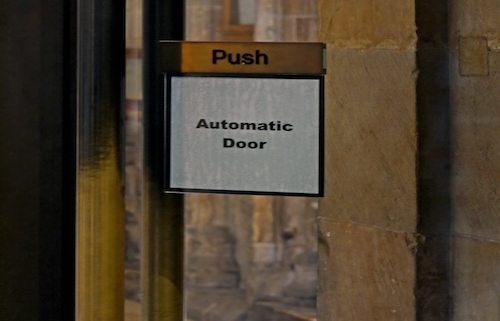Complimentary Contradictions (part 7): When A Plan Falls Apart
Sometimes, you get conflicting words of advice, one which is good and the other which is not, and it requires discernment to determine which is the right advice to follow. But often, these seeming contradictions are, in reality, complementary and, when used appropriately and in the right way, can work together to help you make better decisions. In this series of articles and podcast episodes, we are looking at different leadership ideas or principles that seem to contradict, are opposite sides of a coin, or at least differ from each other and pairing them up to see how they actually complement each other to make you a better leader. Last week, in part 6, we talked about what happens when a plan comes together, and this week, in part 7, we talk about what happens when a plan falls apart.
I tried many different ways to lose weight, and yet, for 25 years, I remained within the same 20-pound range. I’d spent money on weight-loss programs, I’d purchased books on specific weight-loss plans, I’d followed pre-determined menus, and I’d tried various exercise regimens. Every time, I would lose weight up to a point, then it would stop. Most of the time that was because I couldn’t maintain the routine or the plan, yet that didn’t stop me from trying to do it again anyway. I kept trying, but it kept not working.
Then something seemed to change. Perhaps it was a different plan that was more lifestyle-based, perhaps it was motivation, perhaps it was simply a personal choice, but I did something different, and it worked. Over a period of several months, I lost 50 pounds and increased my overall health, and over the next several months after that, I maintained the weight loss. What was different? Probably several things: I made use of an app on my phone to help me maintain awareness of what I was eating, I incorporated moderate exercise, I weighed myself daily (again, to help me stay aware), I ate a piece of chocolate every evening. I’d done variations on these in the past, but this time, they were done in moderation and in combination, rather than with radical, significant change. I continued to eat what I enjoyed but modified and in moderation (smaller portions, more fresh foods, still with lots of flavor); I exercised consistently but moderately (not trying to run a triathlon); I ate something sweet every day, but not in excess; and I maintained awareness every day. The other thing I did was an idea that came from my children: I set two mason jars next to each other where my family could see them, filled one with the number of marbles that equaled the number of pounds I wanted to lose, and each week would move marbles from one jar to the other (or back again) based on what I had lost (or not) until the original jar of marbles was empty, and the empty jar was full. The end result was that I successfully reached my goal weight. I did something different, and it worked. (And I learned some lessons on leadership along the way.)
I’ve experienced the same process numerous times in organizations. Several times, I’ve found myself doing the same thing over and over again even though it hasn’t worked before, and I needed someone or something to shock me into the realization that I needed to do something different. Other times, I’ve entered into a new organization and discovered frustrations over things that were not working, but when I confronted the issues, I was met with resistance because of tradition or history. It took me approaching the issue with an outside perspective to come up with a different way of doing things that worked much better. In one organization, it almost became my unofficial motto to say, “Then we’ll try something different,” as I worked to resurrect a struggling school. In fact, it was in that environment that I recognized the importance of thinking differently, thinking outside the box, and being willing to question how things were done and explore doing them in different ways.
Jim Collins, in Great by Choice (2011), explains the importance of trying different things as part of the process of identifying what works. From his research, he identified several key practices that were necessary for maintaining long-term success. One of those was something he called “empirical creativity,” which he described as “relying upon direct observation, conducting practical experiments, and/or engaging directly with evidence rather than relying upon opinion, whim, conventional wisdom, authority, or untested ideas.” (p. 26) This concept is explained with the illustration of first firing bullets, then cannonballs; or, testing ideas in a low-risk and low-cost manner, using that information to empirically validate what will actually work, and then concentrating resources on those ideas that have been validated. The idea is, very simply – try different things until you find what works, then put your efforts into that.
One of the challenges for a leader is realizing the need to do something different. Sometimes tradition gets in the way – “We’ve always done it that way.” Sometimes we get stuck in routine and don’t think about doing something different. Sometimes, we simply don’t see that we need to do something different because we think that it will still work if we find what needs to be fixed. Then, we keep doing what we have been doing, it keeps not working, and we keep getting frustrated. Black and Gregersen talk about this in their book, Leading Strategic Change (2003), when they say, “the need for change is born of past success – of doing the right thing and doing it well . . . but then something happens: The environment shifts, and the right thing becomes the wrong thing” (p. 11). They go on to describe the process of change as something that happens in four stages (p. 13):
- Stage 1: Do the right thing and do it well
- Stage 2: Discover that the right thing is now the wrong thing
- Stage 3: Do the new right thing, but do it poorly at first
- Stage 4: Eventually do the new right thing well
The bottom line is that, regardless of the work you have done in preparing a plan, it sometimes (often?) doesn’t work the way you expected it to work, and “the best-laid plans of mice and men” seem to fall apart. Perhaps that’s where you find yourself right now. Maybe you are in a circumstance or environment where what you are doing is not working. The right thing is now the wrong thing (or perhaps it was never the right thing). Maybe it never has worked in the past (like my previous weight loss attempts), maybe it worked at one time but not any longer. Regardless, whatever plan you had seems to have fallen apart and it’s not working; and when it doesn’t work, it’s time to do something different.
Black, J. S., & Gregersen, H. B. (2003). Leading Strategic Change: Breaking Through the Brain Barrier. Prentice-Hall: New York, NY.
Collins, J., & Hansen, M. T. (2011). Great by Choice: Uncertainty, Chaos, and Luck – Why Some Thrive Despite Them All. New York, NY: Harper Collins Publishers.





